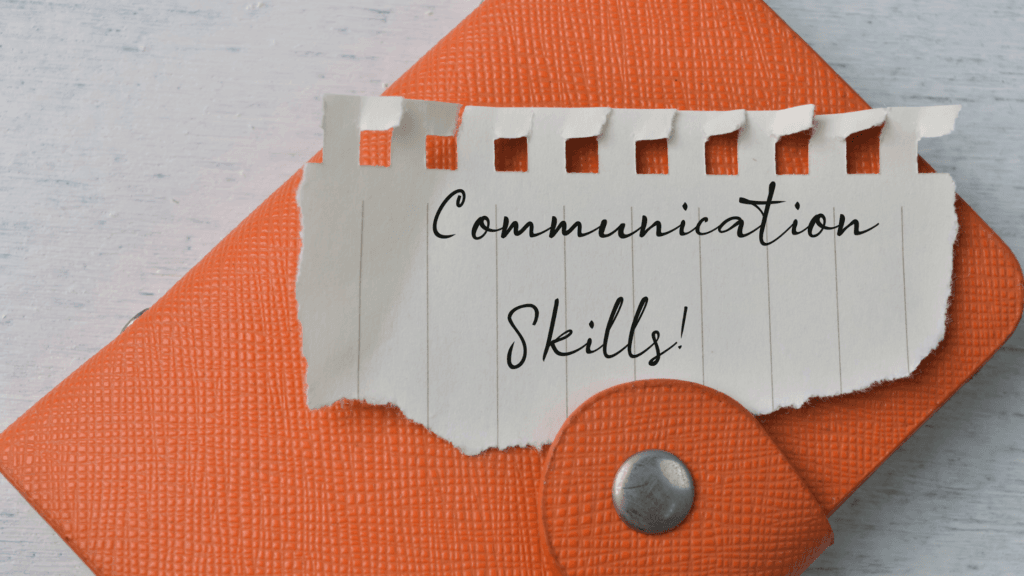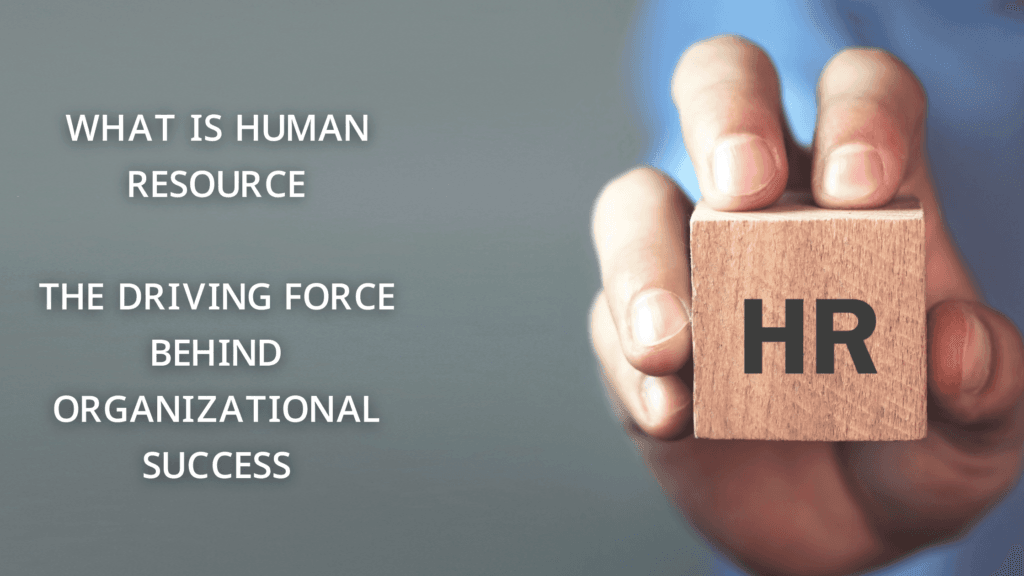Communication is often cited as the most crucial skill in human resource management (HRM). Without effective communication, even the most sophisticated HR systems and processes can fall short. HR professionals must be able to articulate ideas, provide clear instructions, and foster positive relationships between management and employees.
This blog will dive deep into the role of communication skills in HRM, explore its importance in various HR functions, and offer actionable tips for HR professionals to improve their communication competencies. Whether you’re focused on recruitment, staffing, employee training, or managing day-to-day operations, communication serves as the lifeline that keeps everything running smoothly.
The Central Role of Communication in HRM
HR professionals are tasked with managing a wide range of responsibilities, from recruitment and onboarding to employee engagement and organizational development. At every stage of this process, communication is essential.
Why Communication is Vital in HRM
In human resource management, communication does more than just convey information. It:
- Builds Trust
Employees need to feel that they can trust the HR department. Trust is built through transparent, honest communication. When employees feel heard and understood, their trust in HR increases, making it easier to address issues or enact organizational changes. - Improves Efficiency
Clear and concise communication helps reduce misunderstandings and errors. When employees know exactly what is expected of them, they are more likely to perform well. Whether it’s providing feedback, explaining new policies, or clarifying job roles, effective communication streamlines HR processes and increases overall efficiency. - Promotes Employee Engagement
Employee engagement is closely tied to how effectively HR communicates with the workforce. When HR communicates regularly and effectively, employees feel more connected to the organization, leading to higher levels of job satisfaction and retention. - Ensures Compliance
HR departments play a key role in ensuring compliance with legal and regulatory requirements. This includes communicating policies related to safety, benefits, workplace conduct, and more. If these policies are not clearly communicated, the organization may face legal risks and diminished employee morale.
The Power of Communication Recruitment and Staffing
One of the most critical functions of HRM is recruitment and staffing, where communication plays a pivotal role. Poor communication during recruitment can lead to hiring the wrong candidates, misunderstandings during the hiring process, and a negative employer brand.
The Impact of Communication in Recruitment
- Crafting Clear Job Descriptions
The recruitment process starts with the job description, which needs to clearly outline the responsibilities, qualifications, and expectations for the role. Vague or overly complex job descriptions can confuse potential candidates and lead to unqualified individuals applying for positions. On the other hand, a well-communicated job description can attract the right talent, saving both time and resources during the recruitment process. - Candidate Engagement
Throughout the recruitment process, HR must maintain open lines of communication with candidates. This includes confirming interview times, providing updates on the recruitment process, and offering feedback to unsuccessful candidates. Timely and respectful communication enhances the candidate’s experience and strengthens the company’s reputation.
Example:
Consider an HR manager conducting interviews for a new marketing director. A good communicator will ensure that candidates understand the company’s values and expectations from the outset. They’ll also follow up promptly, providing transparent feedback to candidates who were not selected, creating a positive impression even if the candidate is not hired.
- Onboarding and Integration
After recruitment, effective communication is essential during onboarding. New employees need clear, consistent guidance to understand their roles and integrate into the team. A well-structured onboarding program, where expectations are clearly communicated, can significantly reduce turnover during the first few months of employment.
Example:
An HR department might introduce new employees to a “buddy system” where experienced staff mentor newcomers. This system promotes open communication and ensures that new hires feel supported during their transition.
Addressing Staffing Needs
Staffing involves not just hiring, but ensuring the right mix of skills within the organization to meet its goals. HR professionals must communicate with department heads to understand their staffing needs, and they must communicate staffing strategies and timelines to leadership. Miscommunications during staffing can result in overstaffing, understaffing, or placing employees in roles that do not suit their skill sets.
The Role of Soft Skills in HR Communication
Soft skills are interpersonal skills that facilitate effective communication, and they are especially important for HR professionals. While technical knowledge is necessary for the job, soft skills enable HR managers to build relationships, resolve conflicts, and create an inclusive work environment.
Key Soft Skills for HR Professionals
- Empathy
Empathy is the ability to understand and share the feelings of others. For HR professionals, this is essential when dealing with sensitive issues such as performance evaluations, layoffs, or conflicts. Employees want to feel that their concerns are being heard and that the HR department is acting in their best interests.
Example:
During a difficult performance review, an HR manager with strong empathy skills will listen carefully to the employee’s perspective, acknowledge their feelings, and offer constructive feedback in a way that doesn’t feel punitive.
- Active Listening
Active listening involves fully concentrating on what someone is saying rather than just passively hearing them. In HRM, active listening is crucial when resolving disputes, conducting exit interviews, or collecting employee feedback. - Adaptability
The ability to adapt communication styles based on the audience is another critical soft skill. HR professionals must communicate with employees from different departments, backgrounds, and levels within the company, each of whom may require a different approach.
Effective Communication in Employee Training and Development
HR plays a central role in training and development, ensuring that employees have the skills they need to succeed. Here, effective communication is essential for delivering training programs, conducting evaluations, and following up on employee progress.
Designing Effective Training Programs
Training programs must be clearly communicated to employees to ensure that the objectives, expectations, and outcomes are understood. Without clear communication, employees may not see the value in the training, or they may not engage with the material effectively.

Example:
Imagine an HR department rolling out a new leadership development program. If the purpose of the training, the timeline, and the expected outcomes are not clearly communicated, employees may not fully participate. On the other hand, when the program is presented clearly, employees will engage more actively, leading to better results.
Providing Constructive Feedback
Communication is critical when providing feedback during training programs. Constructive feedback helps employees understand their strengths and areas for improvement, and it should always be delivered in a manner that encourages growth rather than discouraging performance.
- Deliver Feedback with Specificity
Vague feedback such as “You need to improve” doesn’t offer much value. Instead, HR professionals should provide clear, specific feedback like “You can improve your presentation skills by focusing on your body language and voice projection.” - Use the Feedback Sandwich
The feedback sandwich is a popular technique where you provide positive feedback, followed by areas for improvement, and then end with more positive feedback. This structure helps employees feel appreciated while still understanding what they need to work on.
Conflict Resolution and Communication in HRM
Conflict resolution is another area where communication skills are indispensable in HRM. Whether resolving interpersonal conflicts or addressing organizational issues, HR professionals must use their communication skills to mediate effectively and ensure that all parties feel heard.
Common Causes of Workplace Conflict
- Miscommunication
Many workplace conflicts arise from miscommunication. Employees may misinterpret instructions, perceive tone as aggressive, or misunderstand policies. HR must step in to clarify misunderstandings and resolve conflicts before they escalate. - Divergent Interests
Conflicts often arise when employees have differing goals or interests. For example, a team member may want to pursue a project that benefits their personal development, while the organization’s goals may not align. HR professionals need to mediate these conflicts by communicating clearly about the company’s priorities and how individual goals can align with them.
Conflict Resolution Techniques in HRM
- Mediation
Mediation involves bringing together conflicting parties and facilitating a discussion where each party can express their concerns. HR professionals must create a neutral environment where both parties feel safe and heard. Communication should be respectful, and HR should guide the conversation toward a mutually acceptable resolution. - Compromise and Collaboration
The goal of conflict resolution is often to find a compromise where both parties can agree. HR professionals must communicate the importance of collaboration, encouraging employees to work together to find solutions rather than creating a win-lose situation.
Enhancing Communication Skills in HRM: Practical Strategies
As an HR professional, enhancing communication skills is not just about talking more; it’s about improving the quality of interactions with employees, management, and external stakeholders.

Here are practical strategies to enhance communication within HRM:
1. Continuous Training in Soft Skills
HR professionals must continuously develop their communication soft skills. This can be achieved through workshops, online courses, or even one-on-one coaching sessions that focus on empathy, conflict resolution, and active listening.
Example:
At Company X, HR introduced a monthly soft skills workshop where team members practiced role-playing different workplace scenarios. The goal was to improve how they communicated during conflict resolution and performance reviews. After a few months, employee satisfaction surveys showed a 15% improvement in how employees perceived HR’s approachability and effectiveness.
2. Using Technology for Better Communication
In today’s digital age, technology plays a key role in facilitating communication in HR. From employee self-service portals to performance management systems, HR can use tools to improve communication transparency.
- Slack/Teams: For day-to-day communication, tools like Slack or Microsoft Teams can help HR communicate more effectively across departments. These platforms allow for real-time messaging, which can help resolve issues quickly.
- Survey Tools: HR can use survey tools to collect feedback on how employees perceive communication within the organization. These tools can identify areas for improvement, leading to more targeted communication strategies.
3. Creating Feedback Loops
Feedback loops are essential for effective communication in HR. Employees need to feel that their voices are heard, and HR professionals must regularly communicate updates based on employee feedback. Feedback loops ensure that communication is two-way and that employees are informed of any changes that occur due to their input.
Example:
A global HR firm instituted quarterly town hall meetings where employees could ask questions directly to HR. This created a sense of transparency and gave employees confidence that their feedback was being considered in decision-making.
4. Tailoring Communication to the Audience
HR professionals interact with different groups of people, each requiring different communication styles. For example, the way you communicate with senior leadership should differ from how you interact with entry-level employees. Tailoring communication ensures that your message is understood by the intended audience.
Example:
An HR manager might use more formal, data-driven communication when presenting to the executive team about staffing levels but would take a more casual and supportive approach when speaking to employees about wellness initiatives.
Addressing Common Communication Challenges in HRM
HR professionals face numerous challenges when it comes to communication. Understanding these challenges and addressing them head-on can improve overall communication efficiency within the organization.
1. Cultural Barriers
In diverse workplaces, cultural differences can create communication challenges. Employees from different cultural backgrounds may have different communication styles, which can lead to misunderstandings.
Solution:
HR should offer cultural sensitivity training to help employees understand and respect different communication styles. HR professionals should also adjust their communication strategies to be more inclusive.
2. Resistance to Change
Employees are often resistant to organizational changes, particularly when it comes to changes in policy or job roles. HR must communicate these changes clearly, explaining why the change is necessary and how it will benefit both the employees and the organization.
Solution:
Provide employees with clear, concise explanations and offer open forums where they can ask questions or voice concerns. When employees understand the reasons behind changes, they are more likely to accept them.
3. Remote Work Challenges
With the rise of remote work, communication has become more challenging. HR professionals must ensure that remote employees remain engaged and feel connected to the organization.
Solution:
Utilize video conferencing, regular check-ins, and collaboration platforms to maintain open lines of communication. HR can also host virtual events to encourage team bonding and communication among remote employees.
Communication is the foundation of effective human resource management. Whether you’re handling recruitment, training, conflict resolution, or daily operations, clear and effective communication is key to success. HR professionals must develop their soft skills, utilize technology, and create open communication channels to ensure that their message is understood and acted upon.
By continuously improving communication skills, HR departments can create a more engaged, efficient, and cohesive workforce. The importance of communication in HRM cannot be overstated—it’s the lifeblood of every organization, driving growth, fostering trust, and ensuring the smooth execution of HR functions.



